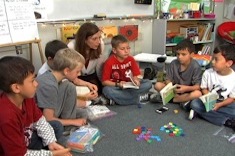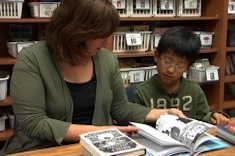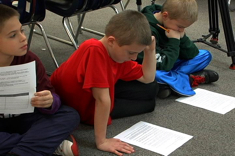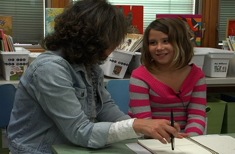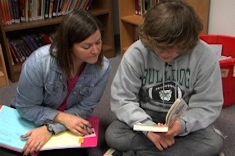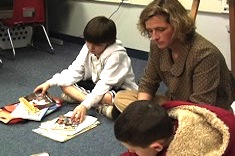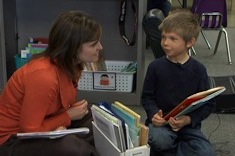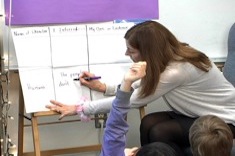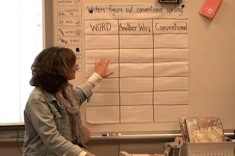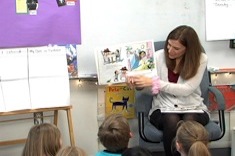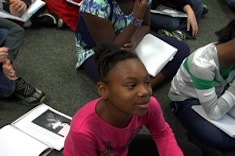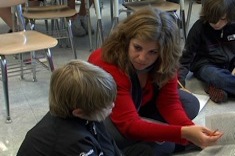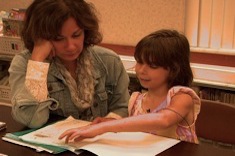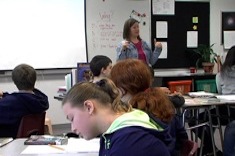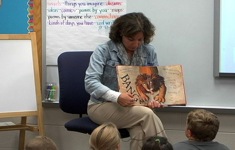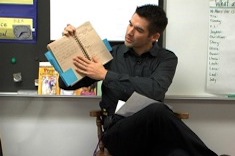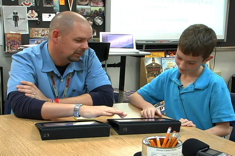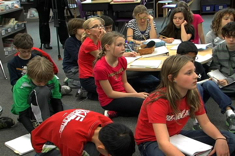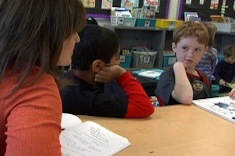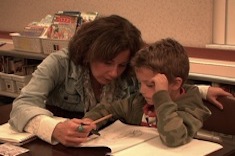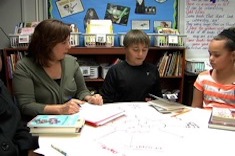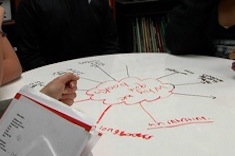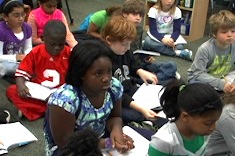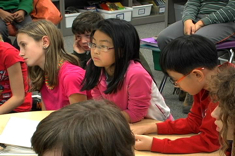Videos
Here is where you’ll find all the latest videos from our contributors. These videos are all captured in classrooms with crews using multiple cameras during regularly scheduled reading and writing workshops.
Latest Content
Conversational Skills in a Boys Book Club
Linda Karamatic observes a second-grade boys book club using tokens as a cue for turn taking, and then discusses her observations with the students.
More Sophisticated Mysteries: Conferring with Yuki
Franki Sibberson confers with fourth grader Yuki to expand his reading options into more complex series and mysteries.
“Article of the Week” Activity in Fourth Grade
Tony Keefer finds that the article-of-the-week activity (adapted from Kelly Gallagher's work) is a good way to integrate short shared texts into his fourth-grade literacy workshop.
Collecting Ideas in the Writer’s Notebook
Ruth Ayres confers with third grader Jade about the importance of the “collecting” phase for writers.
Previewing a Book with an Eighth Grader
In this brief conference, Katie Baydo-Reed chats with an eighth grader as he previews The Wednesday Wars and makes connections to the main character.
Multiple Strategies for Kindergarten Readers
Tammy Mulligan explains why it’s important to encourage kindergarten students to use other strategies beyond “sound it out” in this demonstration small group.
Conferring with Sebastian
Katie DiCesare chats with first grader Sebastian in this one-minute conference, then shares her reflections on where Sebastian might go next in his reading.
Rereading and Retelling to Inferring: Part 2
Linda Karamatic uses texts her second graders already know to build their inferring skills as they construct a chart together.
Words Chart Minilesson
Ruth Ayres develops a word chart in this brief minilesson with second graders.
Exploring Inferring with Second Graders: Part 1
Linda Karamatic uses a read aloud to launch a group activity to build understanding of inferring.
Whole Class Research Planning in 4th Grade
Andrea Smith’s fourth graders brainstorm next steps for their research project on owl habitats, which includes writing a research proposal.
Tracking Characters: A Conferring Tip
Aimee Buckner teaches a fourth grader a strategy for using a sticky note to keep track of characters when there are multiple narrators in a novel.
Rereading for Writing: Conferring with Jack
Katie DiCesare confers with first grader Jack, using rereading to help him rethink the title of his story and possibilities for revision.
Inside and Outside Views: Conferring with Rebecca
Ruth Ayres confers with first grader Rebecca about perspective and illustrations in her writing.
Modeling Annotation in 8th Grade
This video from Katie Baydo-Reed’s eighth-grade classroom is the second part of a series on teaching annotation skills in middle school. A catch-up link to the first video in the series is provided.
Second-Grade Minilesson on Capital Letters
Ruth Ayres presents a minilesson on capital letters to a second-grade class.
Finding Topics in Writer’s Notebooks Minilesson
Sean Moore shares the importance of using a writer’s notebook to discover topics in this minilesson with his second-grade students from early in the year.
Reporting and Crafting: Conferring with Ezra
Ruth Ayres confers with Ezra about revision — using a mentor text to help him move from reporting to crafting in his writing.
Writing a Strong Ending: 4th Grade Writing Conference
Tony Keefer confers with fourth grader Tommy to help him write a stronger ending.
Thinking About Theme
Karen Terlecky explains how she designs instruction and uses mentor texts to teach theme, and includes a video example of a minilesson.
Kindle Highlights: Conferring with Nicole
If you’ve ever used a Kindle reader, you might be fascinated by the highlighted notes of other readers. Franki Sibberson uses those notes in a conference with Nicole.
Partner Reading Conference in First Grade
Katie DiCesare confers with Jack and Praneel about their partner reading.
Illustrations in Kindergarten: Conferring with Dalton
Ruth Ayres confers with kindergartner Dalton early in the year, focusing on his illustrations to build storytelling skills.
Strong Girls Book Group
Franki Sibberson shares a range of books that include compelling female characters with a group of fourth-grade girls.
Group Conference in First Grade
Katie DiCesare meets with first graders Anna and Brendan to help them learn from each other and prepare to share their rereading strategies with the whole class.
Holding Thinking Minilesson with Second Graders
Deb Gaby uses an analogy of animal tracks to introduce the concept of "holding thinking" in reading journals to second graders.
Building Stamina and Book Choice Skills
Franki Sibberson continues a discussion with a small group of students who often abandon books. This is the second installment in a two-part video series.
Abandoning Books Discussion
Franki Sibberson works with a small group of fourth graders who often abandon books.
Whole-Class Research Planning
Andrea Smith leads her fourth graders through brainstorming for their owl research project.
Writing Leads Minilesson
A writing lead is a door — readers will either want to walk through it or shut it and move on to something else. That's the analogy Karen Terlecky uses in this video of a fifth-grade writing workshop minilesson.
Browse Content By
Type
Category
- Assessment Tools
- Big Fresh Archives
- Booklists
- Choice Numeracy
- Classroom Design
- Common Core
- Community Building
- Conferring
- Content Literacy
- Digital Literacy
- English Language Learners
- Equity
- Family Relations
- Free Samples
- Guiding Groups
- Leadership
- Literacy Coaches
- Mentor Texts
- Minilessons
- New Teacher Mentors
- Podcasts
- Poetry
- Quote Collections
- Reading Strategies
- Self Care
- Struggling and Striving Learners
- Talking and Listening
- Teacher Study Groups
- Teaching Reading
- Teaching Writing
- Word Study and Vocabulary
Author
- Melissa Quimby
- Nawal Qarooni
- Gwen Blumberg
- Julie Cox
- The Lead Learners
- Hannah Tills
- Josie Stewart
- Ruth Metcalfe
- Mallory Messenger
- Becca Burk
- Jodie Bailey
- Vivian Chen
- Mary Brower
- Tiffany Abbott Fuller
- Stephanie Affinito
- Ruth Ayres
- Leigh Anne Eck
- Heather Fisher
- Shari Frost
- Julie Johnson
- Suzy Kaback
- Gigi McAllister
- Shirl McPhillips
- Melanie Meehan
- Cathy Mere
- Debbie Miller
- Tara Barnett and Kate Mills
- Tammy Mulligan
- Dana Murphy
- Bitsy Parks
- David Pittman
- Brenda Power
- Heather Rader
- Matt Renwick
- Mandy Robek
- Christy Rush-Levine
- Gretchen Schroeder
- Jen Schwanke
- Brian Sepe
- Katherine Sokolowski
- Stella Villalba
- Jennifer Vincent
Grade Level
Choice Literacy Membership
Articles
Get full access to all Choice Literacy article content
Videos
Get full access to all Choice Literacy video content
Courses
Access Choice Literacy course curriculum and training

